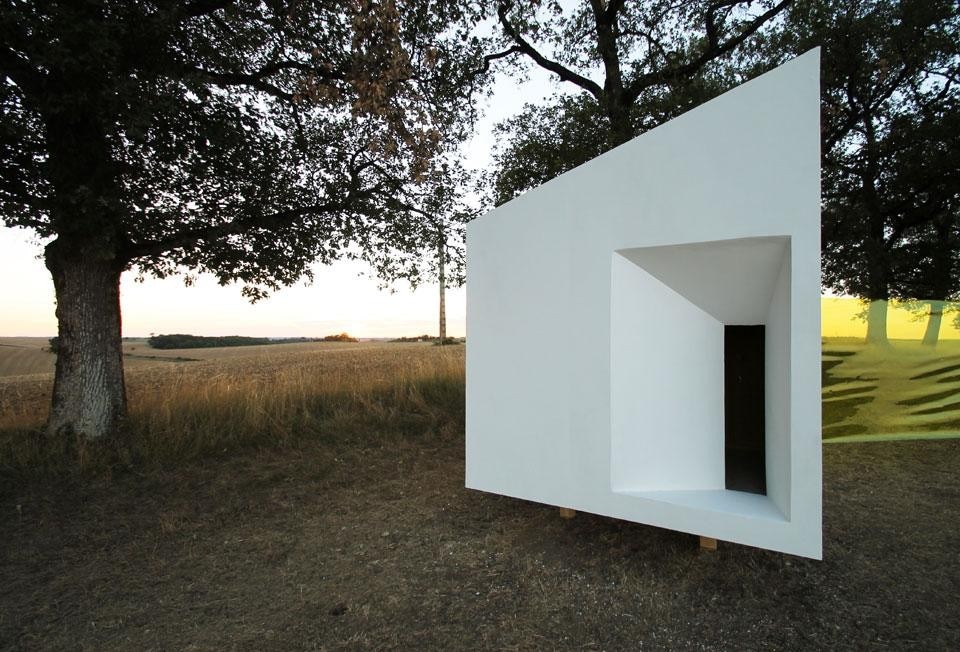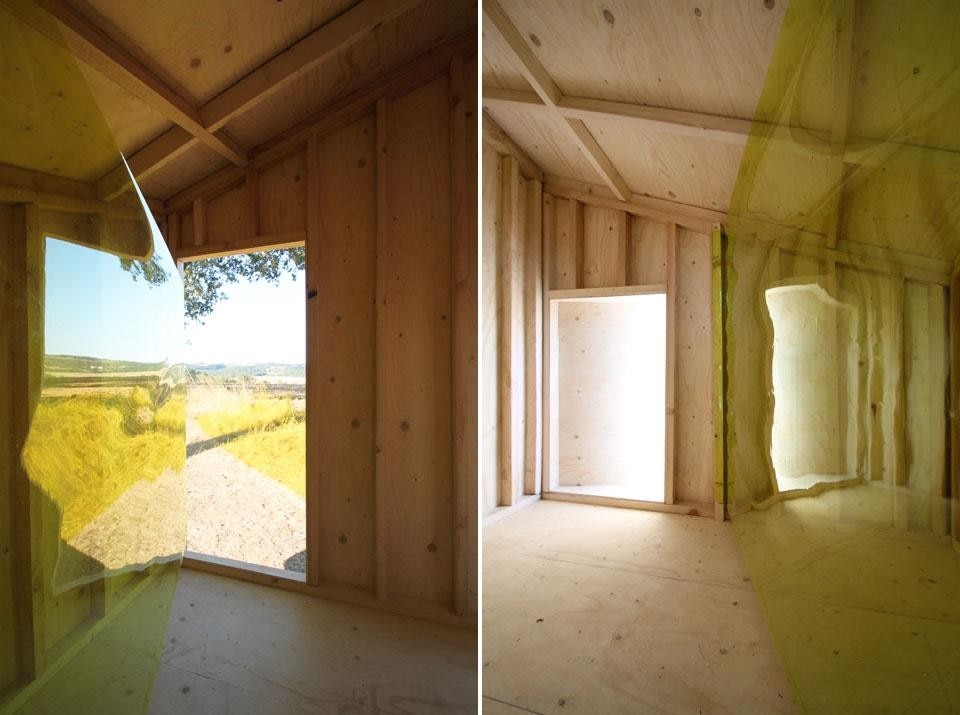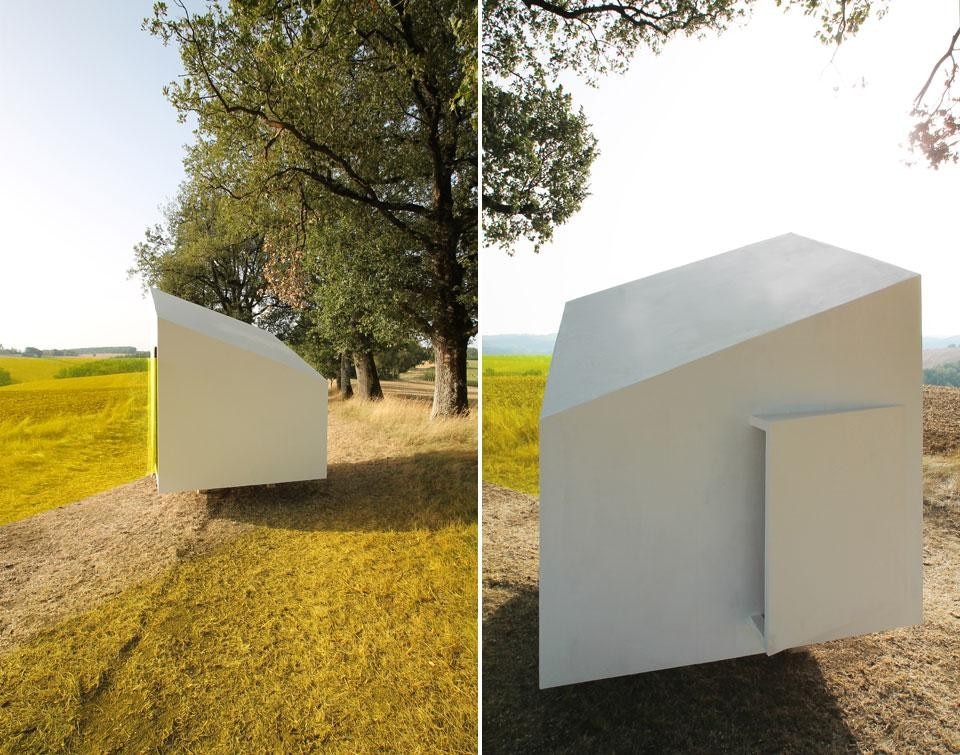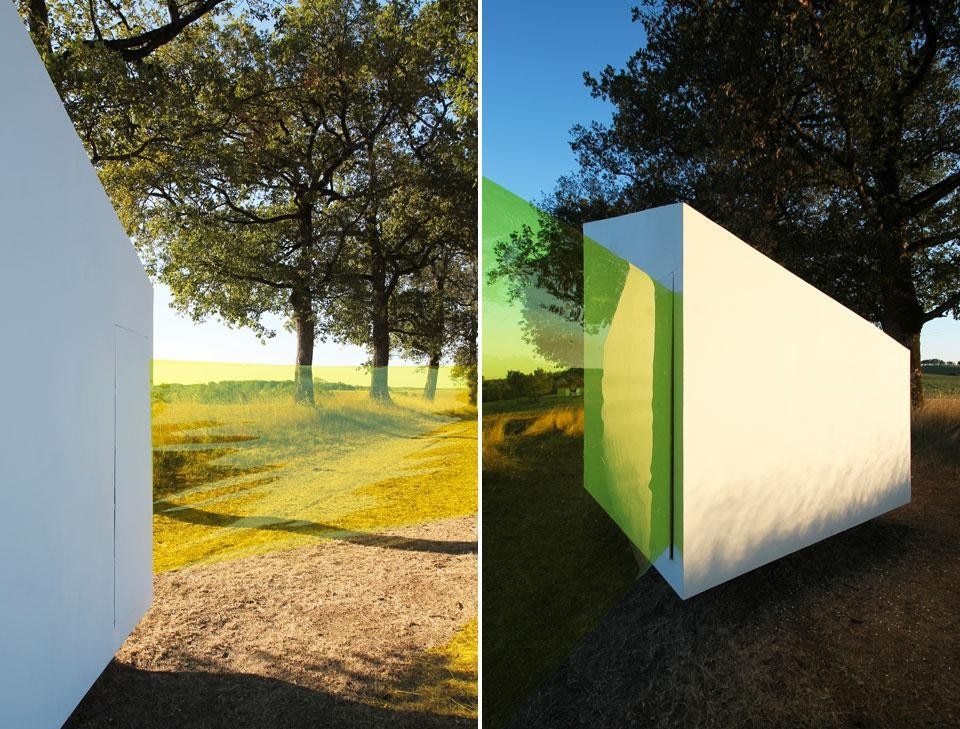The poetic vacuity of the German philosopher's spectral knife has inspired many creators, including the surrealists. The vacant space designed by Gillot + Givry is encapsulated in standard building wood and offers itself directly to present-day artists. Célia Gondol was the first guest to come inside. While the architects installed the object in the middle of the rural Gers department for the location's natural features (the sun's course, the play on light, etc.), the visual artist converted it into a vision machine. Transformed into a giant reel, the structure releases a slightly tinted ribbon, a thin film of colour that shrouds the surrounding recently ploughed land. The vertical openings of the capsule, far-away vestiges of the initial project, slit the landscape into moving kakemonos coloured by the artist's filtering strip, a sort of synthetic wash paint. The visual and architectonic approaches here are perfectly matched and work in unison — CO.LABOR.
Via this minimal installation, the beginning of a hopefully long and diverse series of collaborations, the Paris-based agency is striving to re-establish the strong link between artists and architects. On a smaller scale, they humbly aim to revive the fertile cross-disciplinary actions that are somewhat forgotten or often wasted at the very least.
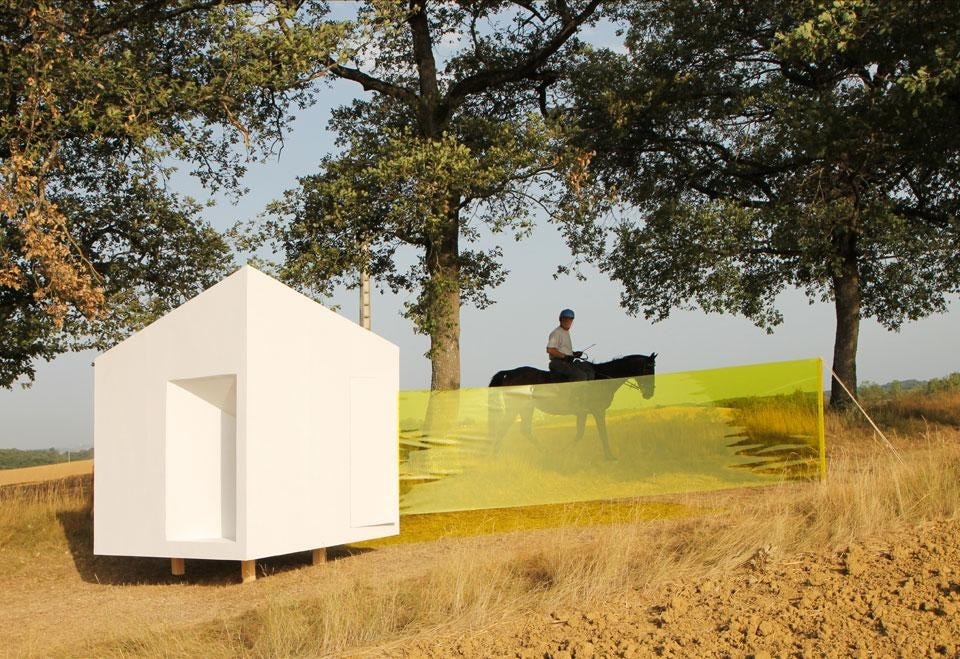
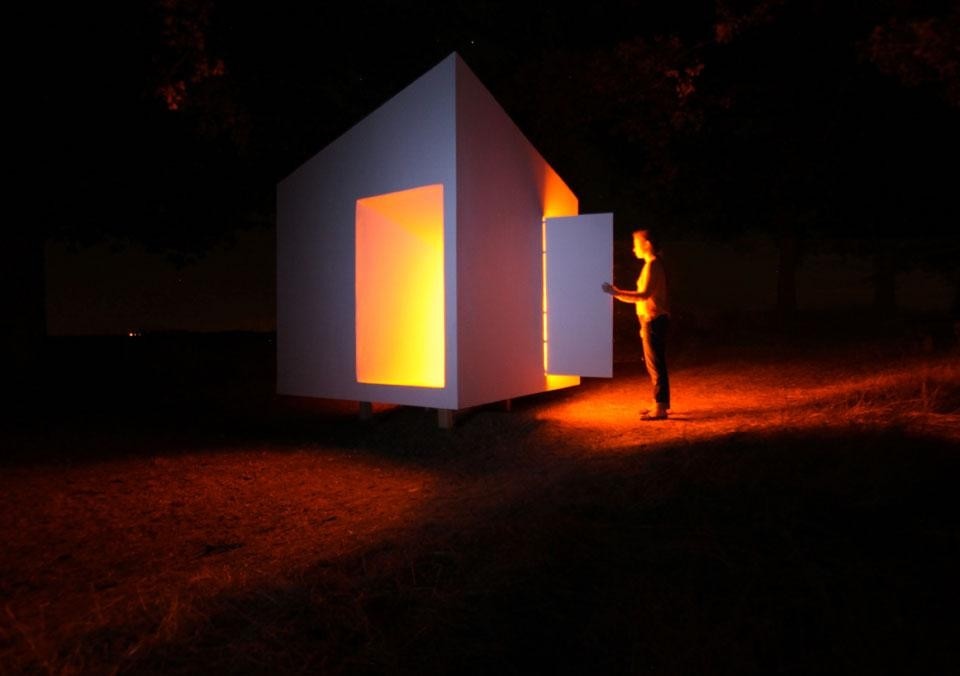
How can contemporary architects invite artists to contribute upstream of their projects? What could the role of architect be in an artist's workshop? Which tools could be used together? Which specific features must be upheld and preserved in these joint ventures? There are so many questions, simple yet essential, that arise from this experimental construction.
Beyond its otherworldly look, the object seems to act as an effective bridge between the arts, a link between areas of expertise that are seemingly compatible
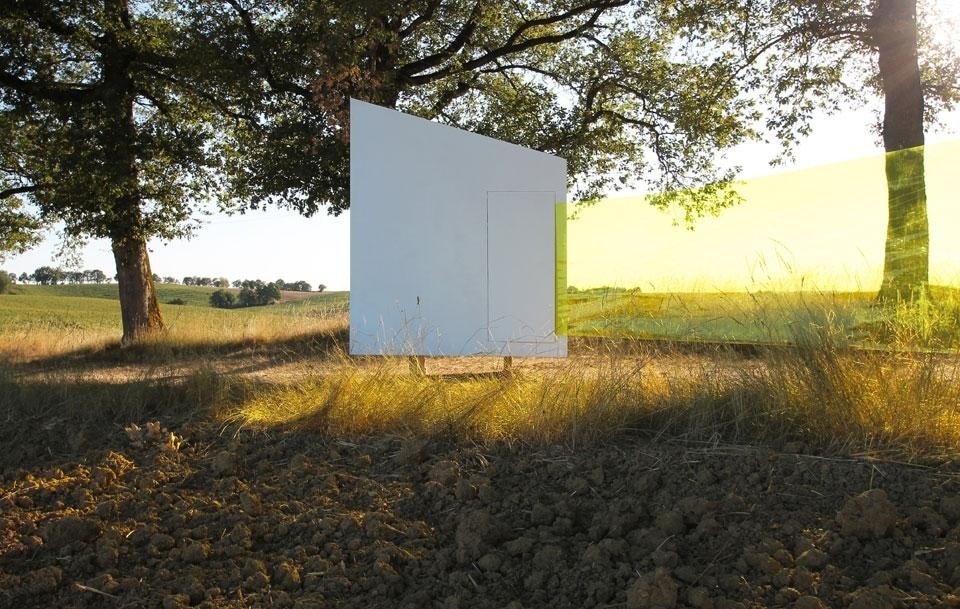
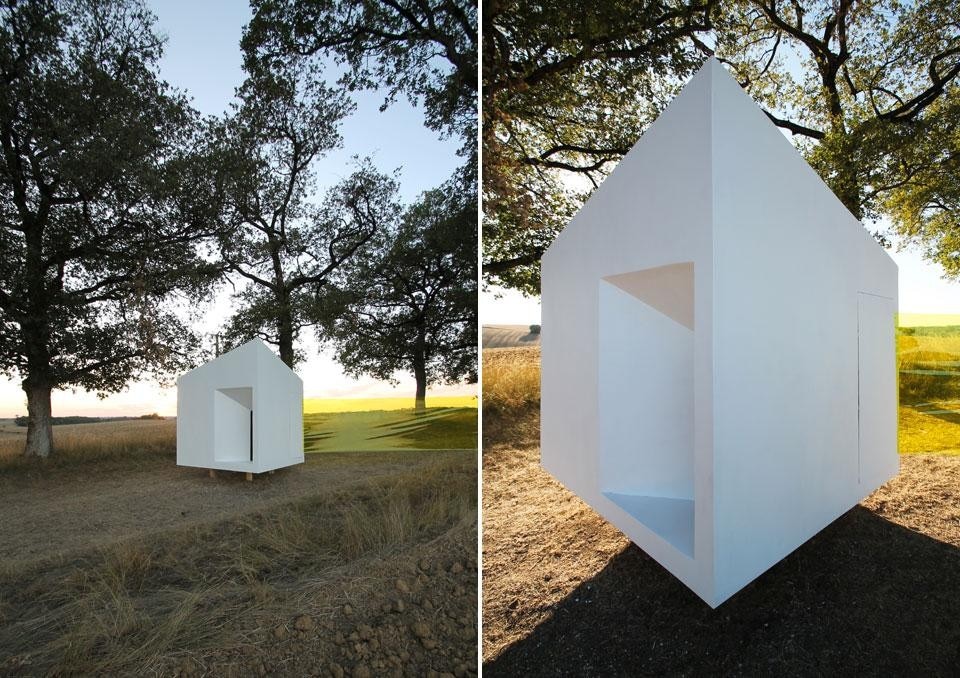
Architects: Gillot + Givry
Collaborators: Vincent Gillot, Eleonore Givry, architects; Celia Gondol, artist
Type: Pavilion (installation)
Function: exhibition space
Location: Barran, Gers, South West of France
Completion: 2012
Client: Private – France
Area: 4 square metres
Budget: 1,000 €
